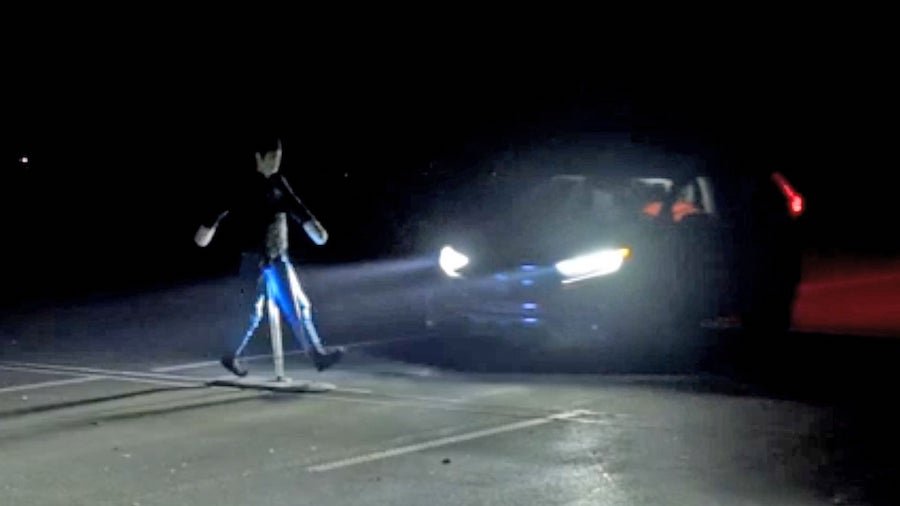Pedestrian Detection Tech Doesn't Work Very Well In The Dark: IIHS

In 2021, nine out of ten vehicles tested by the Insurance Institute for Highway Safety (IIHS) are equipped with automatic emergency braking (AEB) vehicle technology that detects pedestrians. That's a huge improvement from the three out of five vehicles in 2019 – the year when IIHS required at least an advanced rating in vehicle-to-pedestrian front crash prevention to get a Top Safety Pick and Top Safety Pick+ awards.
According to the agency, pedestrian AEB systems yielded a 27 percent reduction in pedestrian crash rates of all severities and a 30 percent reduction in injury crash rates.
However, a recent IIHS research concludes that the odds of a nighttime pedestrian crash for vehicles with and without the crash avoidance technology have no difference in the dark – where three-quarters of fatal pedestrian crashes happen.
Due to this, the IIHS plans to publish the first official nighttime pedestrian crash prevention ratings later this year.
The IIHS conducted a series of nighttime track tests to help design the planned nighttime pedestrian AEB evaluation. These tests also stand as evidence that current pedestrian AEB systems don’t work as well in the dark as they do in daylight.
Eight small SUVs were chosen for the tests, which included vehicles whose AEB systems use a single camera, a dual camera, a single camera and radar, and radar only. As you know, camera-based AEB systems depend on the presence of light or "seeing" the obstacle.
The Volkswagen Taos, which is exclusively equipped with a radar-based pedestrian AEB, showed the least drop in effectivity in the dark. It was, however, the worst performing among the tested vehicle even in broad daylight.
On the other end of the spectrum, the Toyota C-HR and Ford Bronco Sport performed the best in the nighttime tests. Both cars use a combination of a camera and a radar system.
However, the Subaru Forester and Chevrolet Trailblazer, the only vehicles with camera-only systems, achieved similar nighttime results to three other vehicles with camera-and-radar systems, the Honda CR-V, Volvo XC40, and Hyundai Venue.
"Some systems worked much better than others in the dark, but there was no single type of technology that got better results," said David Aylor, manager of active safety testing at IIHS.
Related News
